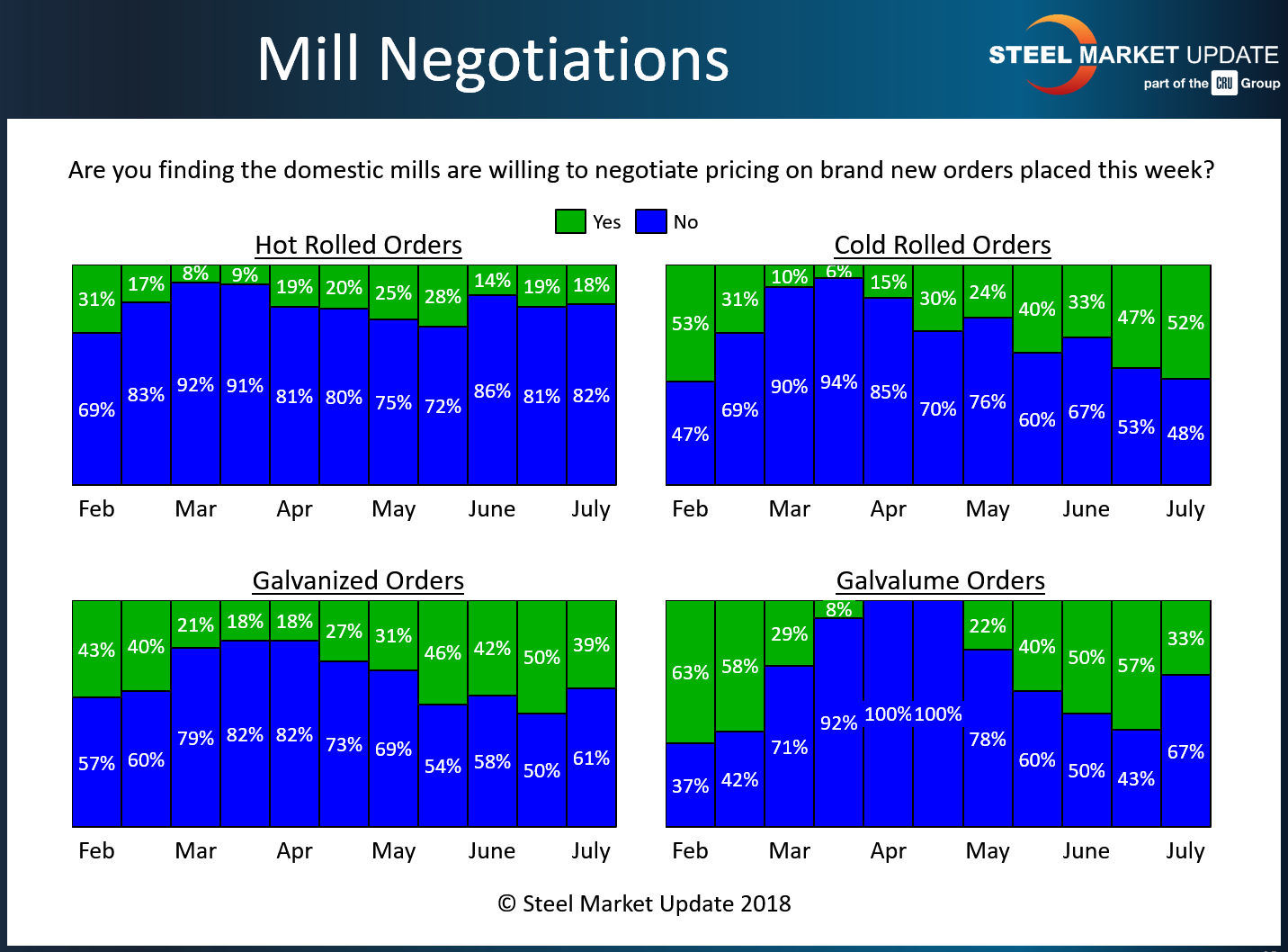SMU Data and Models

Steel Mill Negotiations: Price Talks Mixed
Written by Tim Triplett
July 8, 2018
Steel mills appear slightly more willing to negotiate spot prices on cold rolled and less open to price discussions on hot rolled, galvanized and Galvalume products, according to respondents to last week’s Steel Market Update market trends questionnaire. Every two weeks, in a proprietary poll, SMU tracks how buyers and sellers of flat rolled steel represent the mill negotiation position.
By market segment, 18 percent of hot rolled buyers said they have found mills willing to negotiate, up from 14 percent one month ago. Most, 82 percent, said the hot rolled mills are still standing firm.
In the cold rolled segment, 52 percent said they have found some mills willing to talk price, up from 33 percent in early June. Forty-eight percent of respondents reported mill prices on cold rolled as non-negotiable.
Prices on coated products appear to have firmed up. In the galvanized sector, 39 percent said the mills were open to price discussions, down from 50 percent in mid-June. About 33 percent of Galvalume buyers said mills are now willing to talk price, down from 57 percent two weeks ago.
Note: SMU surveys active steel buyers twice each month to gauge the willingness of their steel suppliers to negotiate pricing. The results reflect current steel demand and changing spot pricing trends. SMU provides our members with a number of ways to interact with current and historical data. To see an interactive history of our Steel Mill Negotiations data, visit our website here.

Tim Triplett
Read more from Tim TriplettLatest in SMU Data and Models

SMU’s June at a glance
A look at SMU data for the month of June.

SMU Survey: Buyers’ Sentiment rebounds from multi-year low
Both of SMU’s Steel Buyers’ Sentiment Indices edged higher this week. Current Sentiment rebounded from a near five-year low, while Future Sentiment rose to a two-month high

SMU flat-rolled market survey results now available
SMU’s latest steel buyers market survey results are now available on our website to all premium members.

SMU Survey: Sheet lead times pull back after early-June blip, plate holds
Following the uptick seen two weeks ago, lead times eased this week for all four sheet products tracked by SMU, while plate lead times held steady, according to this week’s market survey.

SMU Survey: Pricing power abruptly shifts to steel buyers
The majority of steel buyers responding to our latest market survey say domestic mills are more willing to talk price on sheet and plate products than they were earlier this month. Sheet negotiation rates rebounded across the board compared to early June, while our plate negotiation rate hit a full 100%.

